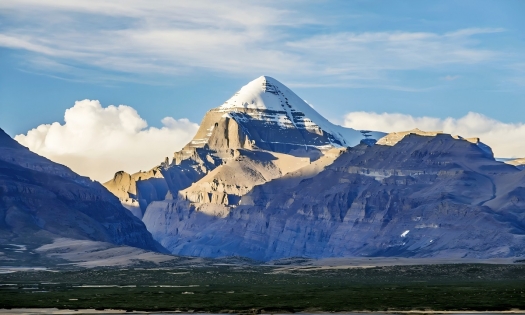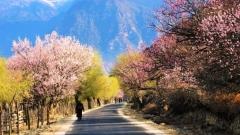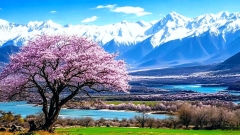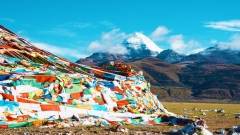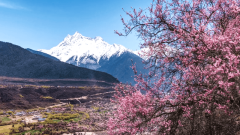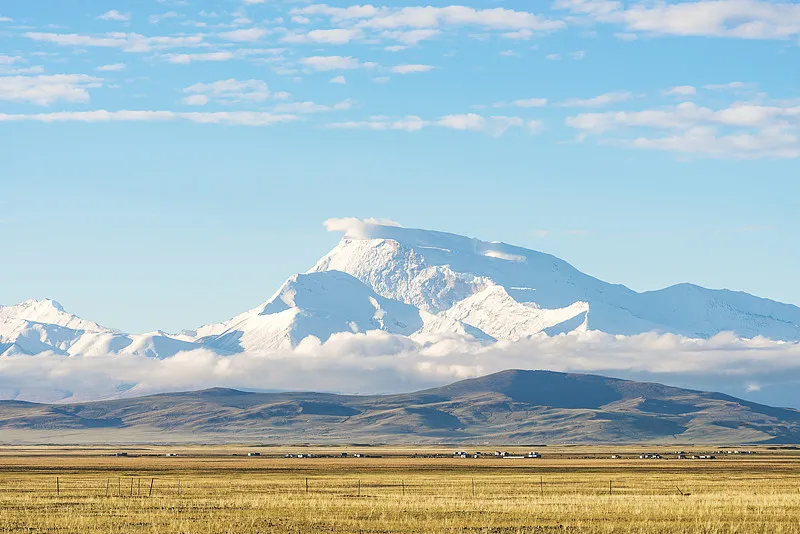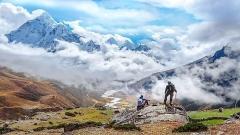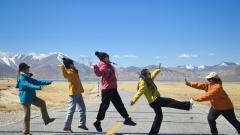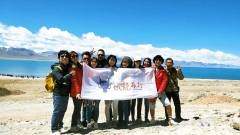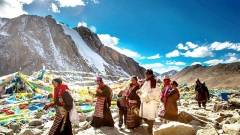Mount Kailash, rising majestically in western Tibet, is one of the world’s most sacred peaks. Believed to be the spiritual center of the universe by Buddhists, Hindus, Jains, and Bon practitioners, it attracts thousands of pilgrims and adventurers each year. While climbing the mountain is prohibited, trekking the 52-kilometer kora around its base is considered a profound spiritual and physical journey. If you are planning a trip, here are the 10 most frequently asked questions to guide your preparation.
1. Why is Mount Kailash sacred?
Mount Kailash, standing at 6,638 meters, is considered the “Center of the Universe” in Hinduism, Buddhism, Jainism, and Bon. Hindus believe it is the abode of Lord Shiva; Buddhists regard it as Mount Meru, the cosmic axis; Jains see it as the site where their first saint attained liberation; Bon followers consider it the seat of spiritual power. Completing the kora (circumambulation) is thought to purify sins and bring good fortune. Many pilgrims travel thousands of miles barefoot or prostrate themselves along the path, making it one of the most extraordinary spiritual journeys in the world.
2. Can foreigners climb Mount Kailash?
No one has ever climbed Mount Kailash, and all attempts are strictly forbidden out of respect for its religious importance. Even famous mountaineers have declined permits, recognizing its sanctity. Instead, the true experience lies in completing the 52 km kora trek around the mountain. This trek offers dramatic views of snow peaks, prayer flags fluttering in the wind, and streams of pilgrims chanting mantras, which together create an atmosphere far more powerful than any summit could offer.
3. What travel permits are required?
Foreigners cannot travel independently in Tibet. You must join an organized tour arranged by a licensed travel agency. The permits required include:
-
Tibet Travel Permit – required to enter Tibet by plane or train.
-
Alien’s Travel Permit – necessary for travel outside of Lhasa, including Mount Kailash.
-
Military Permit – required because Kailash is near sensitive border regions.
Your agency will apply for these on your behalf, usually needing your passport and Chinese visa at least 20 days in advance. Without them, you cannot legally visit Mount Kailash.

A Sample of Tibet Travel Permit
4. What is the best time to visit Mount Kailash?
The ideal months are May to October. During this time, the weather is relatively stable, roads are open, and temperatures are bearable for trekking. May and June offer lush scenery and fewer crowds, while July and August are warmer but see occasional rainfall. September and October bring clear skies, making them perfect for photography. Winter (November to April) should be avoided due to snow blocking the roads, freezing temperatures, and dangerous trekking conditions.
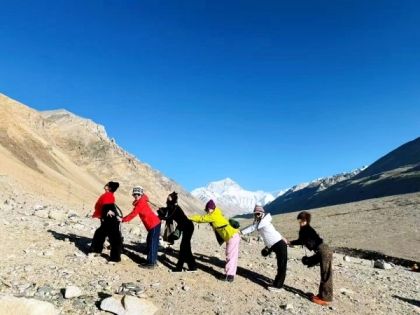
Kailash
5. How difficult is the Mount Kailash kora trek?
The kora is considered moderate-to-difficult. Although the trail is not technically challenging, the altitude makes it demanding. The highest point, Dolma La Pass (5,630m), requires stamina and slow pacing. Most pilgrims complete the trek in 3 days, but very devoted pilgrims may finish it in a single day by running or prostrating along the entire path. For foreign travelers, it is recommended to allow enough acclimatization time in Lhasa or Shigatse before attempting the kora to reduce the risk of altitude sickness.
6. How can I prevent altitude sickness?
Altitude sickness is the biggest concern for travelers to Kailash. To minimize risks:
-
Spend at least 2–3 days in Lhasa (3,650m) before heading west.
-
Stay hydrated—drink 3–4 liters of water daily.
-
Avoid alcohol, smoking, and overexertion in the first few days.
-
Eat light meals high in carbohydrates.
-
Carry medication such as Diamox if recommended by your doctor.
-
Oxygen bottles and portable altitude chambers are sometimes available in guesthouses along the route. Remember, prevention and gradual ascent are the best strategies.
7. What should I pack for the journey?
Packing well ensures a safe and comfortable trek. Essentials include:
-
Clothing: Layered thermal wear, fleece jackets, down jacket, gloves, hats, and rainproof outerwear.
-
Trekking gear: Strong hiking boots, trekking poles, backpack, and sleeping bag rated for sub-zero temperatures.
-
Personal items: Sunscreen, sunglasses, lip balm, first aid kit, and altitude medication.
-
Food and water: Energy bars, instant noodles, snacks, and water purification tablets.
-
Money: Carry enough cash (RMB) since ATMs are unavailable in Kailash areas.
Being well-prepared can make the difference between a rewarding trek and a difficult struggle.
8. What kind of accommodation and food are available?
Accommodation near Kailash is basic. In Darchen, the starting point of the trek, guesthouses provide simple beds and blankets but limited hot water. During the trek, you’ll find small monasteries or tea houses with very modest facilities—sometimes just a shared room with wooden beds. Toilets are usually outdoors.
Food options are also limited: expect instant noodles, rice dishes, yak-butter tea, and occasionally Tibetan dumplings (momos). In Lhasa and Shigatse, however, you can enjoy comfortable 3–4 star hotels and a variety of Tibetan, Chinese, and even Western food options before heading west.
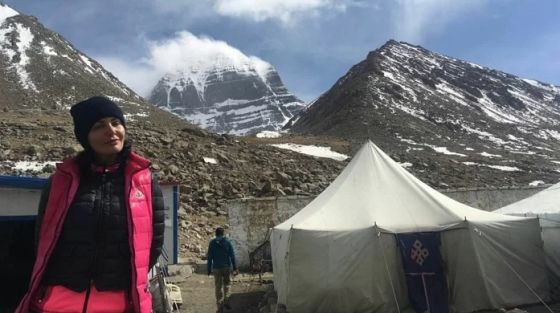
Tent guesthouses
9. What other sites can I see near Mount Kailash?
A journey to Kailash is not only about the kora—it’s also about exploring the surrounding sacred landscapes. Highlights include:
-
Lake Manasarovar: One of the holiest lakes in Asia, believed to cleanse sins when you bathe in or walk around it. Sunrise and sunset here are magical.
-
Darchen: The small town at the foot of Kailash, serving as the starting and ending point of the trek.
-
Monasteries: Chiu Monastery by Manasarovar and monasteries around the Kailash kora, each with deep religious significance.
-
Guge Kingdom Ruins: About 200 km away, an ancient Tibetan kingdom with cliffside monasteries and murals.
These additional sites add cultural and spiritual depth to your trip.
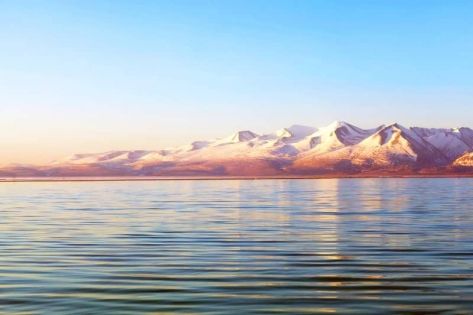
Manasarovar Lake
10. What cultural etiquette should I follow?
Respect is key when visiting Kailash. Keep these in mind:
-
Do not attempt to climb the mountain—it is strictly sacred.
-
Always walk clockwise around Kailash (except Bon pilgrims, who go counter-clockwise).
-
Ask permission before photographing pilgrims or monks.
-
Avoid loud noise, littering, or disturbing prayer rituals.
-
Dress modestly when visiting monasteries and follow monks’ instructions.
By showing respect, you’ll not only avoid offending locals but also enrich your own spiritual experience.
Conclusion
Visiting Mount Kailash is more than an adventure—it’s a journey of faith, culture, and endurance. From securing the right permits and preparing for high-altitude trekking to respecting local traditions, careful planning is essential. Whether you go as a pilgrim seeking blessings or as a traveler chasing once-in-a-lifetime views, Mount Kailash will leave you with memories that transcend ordinary travel. It is truly the “Journey of a Lifetime” on the Roof of the World.



